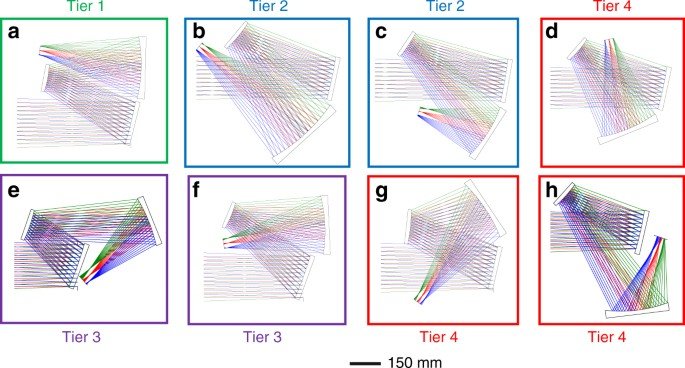In a breakthrough for optical engineering, researchers have developed a novel design methodology for freeform optical systems, significantly enhancing the precision and efficiency of these advanced imaging technologies. The new approach tackles the complex challenge of optical aberrations in freeform surfaces, which are increasingly used in high-performance systems due to their design flexibility.
The core of this advancement lies in a systematic method using Zernike polynomials to mathematically represent the shape of freeform surfaces. This representation, combined with principles from nodal aberration theory, allows engineers to predict and visualize aberration fields that arise from these complex shapes. The research team leverages aberration full-field displays, or FFDs, to pinpoint and correct specific optical errors by strategically applying tailored freeform adjustments.
Their design process begins by carefully selecting an initial optical system geometry that is inherently well-suited to freeform correction. For demonstration, the team focused on a three-mirror imager, meticulously choosing a configuration that maximizes the benefits of freeform surfaces while minimizing fabrication complexity. This selection process is guided by a set of filters that analyze the aberration characteristics of different geometries and their compatibility with freeform correction techniques.
The optimization method is iterative. Starting with a basic spherical mirror system, the researchers progressively refined the design by adding specific Zernike polynomial terms to the mirror surfaces. Each addition is carefully guided by the analysis of aberration FFDs, ensuring that the applied freeform shapes precisely target and neutralize the dominant aberrations, such as astigmatism and coma. This controlled approach differs significantly from conventional optimization methods, which often rely on broad, less targeted adjustments.
A key finding of the research underscores the superiority of this aberration-driven method over traditional optimization techniques. When compared to a conventional optimization process, the new methodology achieved comparable performance with significantly less complexity in the freeform surfaces. Specifically, the freeform departure, a measure of surface complexity, was dramatically reduced, particularly on the secondary mirror of the imager. This reduction in complexity translates to easier and more cost-effective manufacturing.
Furthermore, the research highlights the crucial role of initial geometry selection. By comparing the optimized performance of a well-chosen geometry with a less suitable one, the team demonstrated that geometry choice is the primary determinant of successful freeform system design. An alternative geometry, even with extensive optimization, yielded significantly inferior performance and required much more complex surface shapes, reinforcing the importance of the initial design choices.
This new aberration-based design methodology offers a significant step forward in the field of freeform optics. By providing a systematic and targeted approach to aberration correction, it paves the way for the development of more compact, higher-performing optical systems with reduced manufacturing challenges. The research suggests a future where freeform optics can be more readily and effectively implemented in a variety of advanced imaging applications.

Leave a Reply